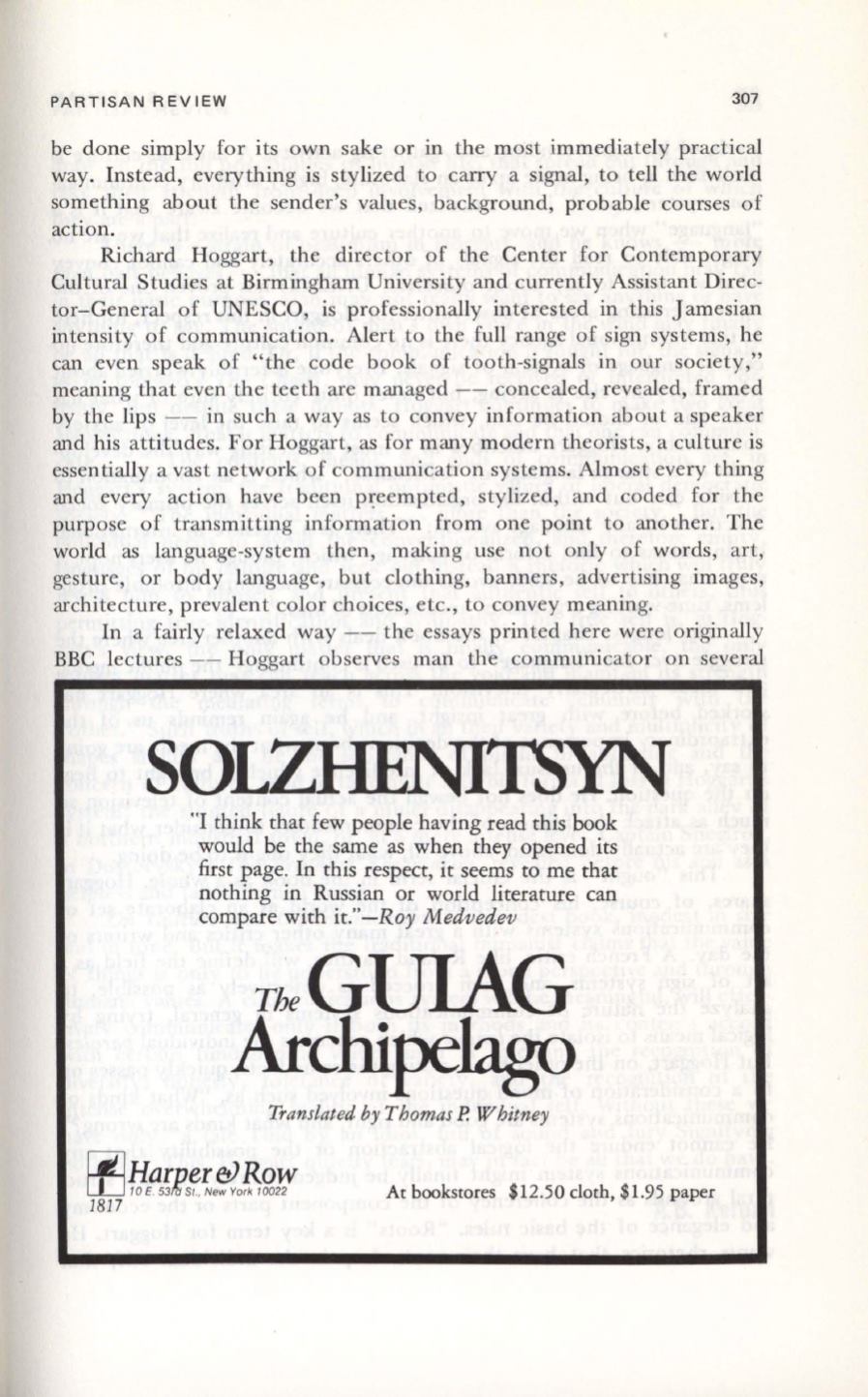
PARTISAN REVIEW
307
be done simply for its own sake or in the most immediately practical
way. Instead, everything is stylized to carry a signal, to tell the world
something about the sender's values, background, probable courses of
action.
Richard Hoggart, the director of the Center for Contemporary
Cultural Studies at Birmingham University and currently Assistant Direc–
tor-General of UNESCO, is professionally interested in this Jamesian
intensity of communication. Alert to the full range of sign systems, he
can even speak of "the code book of tooth-signals in our society,"
meaning that even the teeth are managed -- concealed, revealed, framed
by the lips -- in such a way as to convey information about a speaker
and his attitudes. For Hoggart, as for many modern theorists, a culture is
essentially a vast network of communication systems. Almost every thing
and every action have been
p~eempted,
stylized, and coded for the
purpose of transmitting information from one point to another. The
world as language-system then, making use not only of words, art,
gesture, or body language, but clothing, banners, advertising images,
architecture, prevalent color choices, etc., to convey meaning.
In a fairly relaxed way -- the essays printed here were originally
BBC lectures -- Hoggart observes man the communicator on several
SOLZHENfISYN
"I think that few people having read this book
would be the same as when they opened its
first page. In this respect, it seems to me that
nothing in Russian or world literature can
compare with
it."-Roy
Medvedev
TheGUIAG
Archipelago
Translated by T hamas
P.
Whitney
At bookstores $12.50 cloth, $1.95 paper


